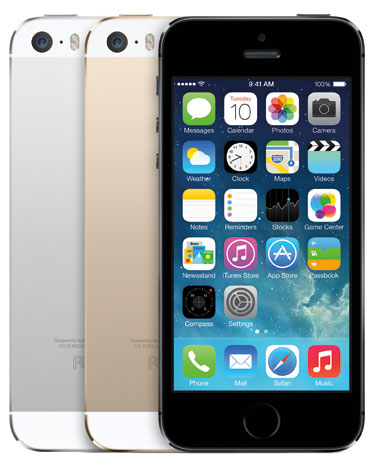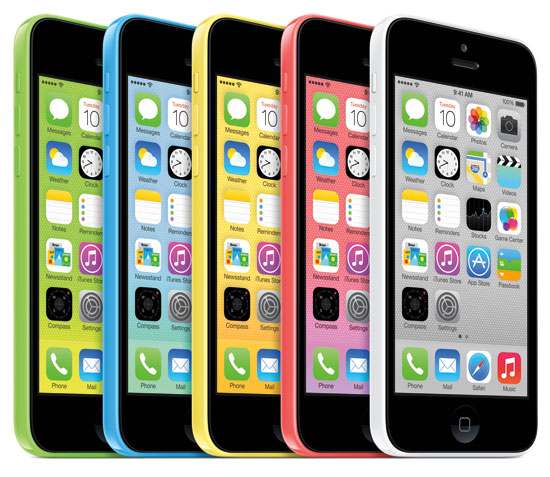Mediocre iPhone Calling
While the 5S continues to set the standard, its bargain companion 5C is short on both savings and features
This week sees something new for Apple fans. For the first time ever, Apple is launching not one, but two iPhones to the clawing masses who gather outside Apple stores every autumn. Of course, there’s Apple’s latest and greatest iteration of the iPhone, the 5S. This is their cognac-soaked bread and butter, their halo product through which iOS reaches millions of smartphone users each year. The 5S sets the standard that Android and Windows Phone manufacturers still try to best, even though each ecosystem is so divergent at this point that direct comparisons aren’t really valid anymore. However, the iPhone’s build-quality, internal technologies and Apple’s profit margins have always meant that it was strictly a top-tier, premium device.
 This fact alone has rendered it unattainable to many, particularly those with low incomes and in emerging markets across the globe. The iPhone is a status symbol for those who own it, and membership to the club costs. That’s why the second of Apple’s launches was initially thought to solve this problem — the iPhone 5C, as it is known, was to be a budget iPhone for the unwashed masses. Rumors and leaks pointed to an all-plastic device, one with the same specs as the iPhone 5, but with a new, low price so that Apple could compete in a market it has never been able to reach with a new device: mid-range handsets. Typically, this was a space occupied by past iterations of the device — the iPhone 4S is still selling strongly as a free on-contract device, but it’s now two years out of date. The iPhone 5C would give Apple a handset to rival mid-tier Androids and Windows Phones, which are eating away at Apple’s once-strong market share, particularly in places such as China and South America.
This fact alone has rendered it unattainable to many, particularly those with low incomes and in emerging markets across the globe. The iPhone is a status symbol for those who own it, and membership to the club costs. That’s why the second of Apple’s launches was initially thought to solve this problem — the iPhone 5C, as it is known, was to be a budget iPhone for the unwashed masses. Rumors and leaks pointed to an all-plastic device, one with the same specs as the iPhone 5, but with a new, low price so that Apple could compete in a market it has never been able to reach with a new device: mid-range handsets. Typically, this was a space occupied by past iterations of the device — the iPhone 4S is still selling strongly as a free on-contract device, but it’s now two years out of date. The iPhone 5C would give Apple a handset to rival mid-tier Androids and Windows Phones, which are eating away at Apple’s once-strong market share, particularly in places such as China and South America.
The price for all of this cheaper iPhone goodness? In the U.S., an on-contract price of $99 for the 16GB model, and a sim-free cost of $549. Wait, didn’t the rumors say budget? The iPhone 5S retails at $199 on contract, and $649 sim-free. This new, lower-cost iPhone 5C is only $100 cheaper, yet is vastly inferior in several ways.
Whereas the 5S is crafted from chamfered aluminum, the 5C is plastic. Polycarbonate, yes, but it is a glossy, unibody plastic device. Apple has filled the insides with a reinforced steel frame to lend it a sense of solidity often missing from plastic phones, but it is in no regards a premium handset. Inside, it’s all now-redundant iPhone 5. The same A6 processor, the same 4-inch Retina display — the same everything, except the 5C launches with iOS 7 installed and a range of zany, colorful cases.
Great, but it’s still not a budget phone. And that’s because in a world where Android manufacturers and Windows Phones are racing to the bottom end, the fastest growing segment of the market where cheap smartphones are an easy upgrade from the feature phones of past years, Apple still has a profit margin to think of. There isn’t any possibility that the 5C costs only $100 less than the 5S to make — the plastic handset is guaranteed to be selling for a hefty premium over its manufacturing costs. Why, then, make a device which slots between the 5S and the 4S, but offers no real advantage over either in terms of budget, save for a mix of five bold colors?

Simple — Apple needs the press. In the U.S., the 5C will likely do very well. Teenagers, hipsters, those who can’t quite afford the 5S — it’ll sell like hotcakes. The same people who derided Nokia and its bold, vibrant Lumia handsets will snap up the 5C and proclaim that its colorful exterior is revolutionary. Fine, so Apple has sales here. What about overseas? What about the countries where Apple is lagging behind, those countries where Android is surging ahead and others where Apple is losing market share to Windows Phone? That’s what the 5C is for. It’s attention-grabbing, something to draw users to the brand. The 5C is designed for colorful, eye-catching ads that push Apple into the public consciousness in a way the full-fat, premium 5S cannot. With a price just low enough to be attractive, it is a way to pull new users into the iOS ecosystem, without offering them a bargain handset that could dilute the premium image the Apple name carries.
Apple doesn’t care about Samsung throwing devices in at every price and size. It isn’t fussed that Nokia is snapping up the budget smartphone market with its own colorful Lumia devices. Apple cares about profit, investors and its stock price. The iPhone 5C is designed to help all of these through proliferating the Apple name.
Should you buy it, though? If you want a cheap iPhone, get the 4S. If you want the best iPhone, get the 5S. If you want an iPhone that’s in the middle, get the iPhone 5 on-contract for $99. Yes, the handset the 5C replaces is still available, and its every bit the premium iPhone you want, at a more manageable price. If you want to see the real reason for the 5C’s existence, watch Asia and South America — that’s where the real impact of its multi-hued marketing ploy will be felt.
Read more of Rhuaridh Marr’s technology columns at metroweekly.com/technocrat
Support Metro Weekly’s Journalism
These are challenging times for news organizations. And yet it’s crucial we stay active and provide vital resources and information to both our local readers and the world. So won’t you please take a moment and consider supporting Metro Weekly with a membership? For as little as $5 a month, you can help ensure Metro Weekly magazine and MetroWeekly.com remain free, viable resources as we provide the best, most diverse, culturally-resonant LGBTQ coverage in both the D.C. region and around the world. Memberships come with exclusive perks and discounts, your own personal digital delivery of each week’s magazine (and an archive), access to our Member's Lounge when it launches this fall, and exclusive members-only items like Metro Weekly Membership Mugs and Tote Bags! Check out all our membership levels here and please join us today!





















